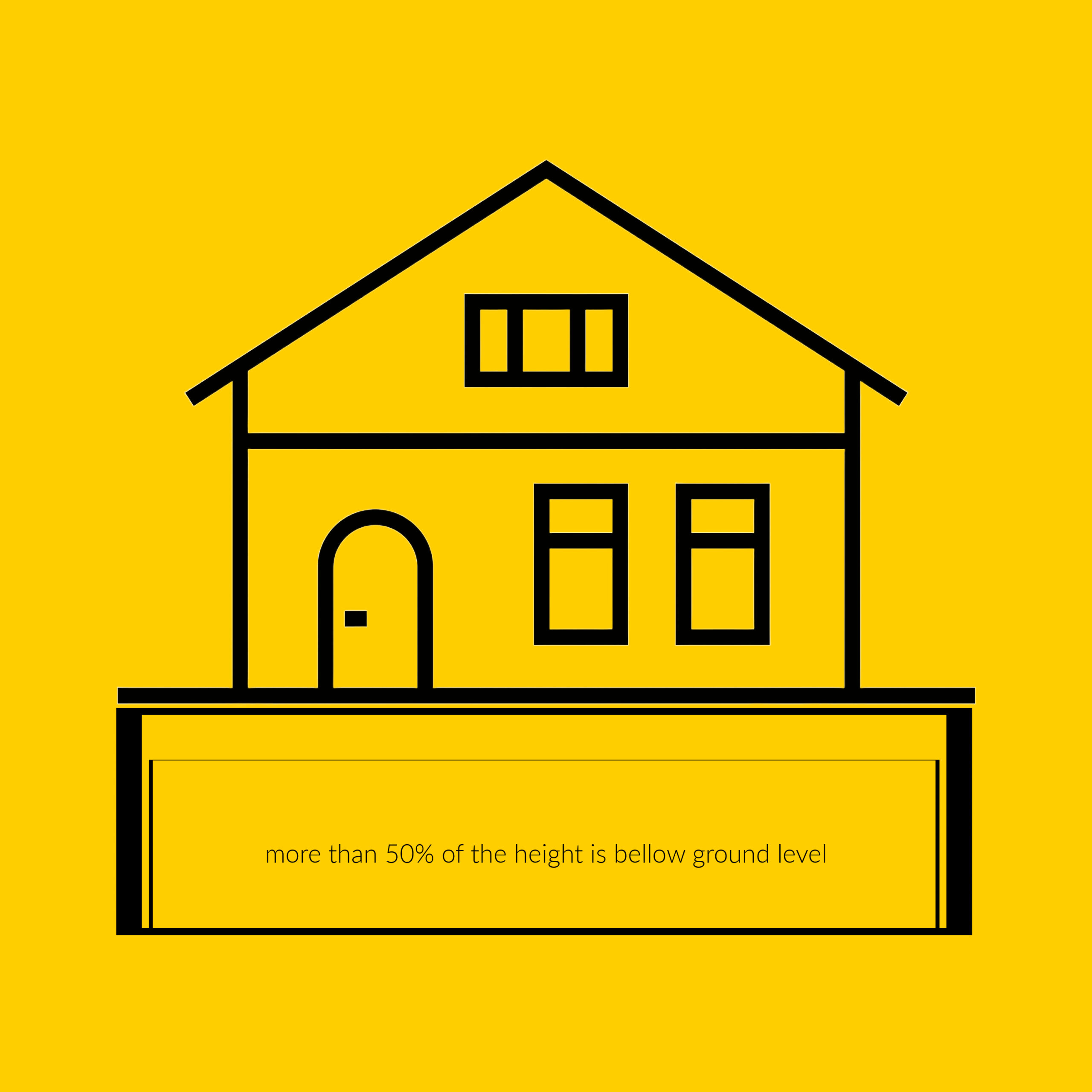The term basement describes “the part of a building that is wholly or partly below ground level”. Basement types dictate what–if anything–the space is used for. They range from a hole in the ground that contains services like heating ducts to spaces that can be turned into an apartment.

6 Types of Basements And How To Identify Them
Basements are not common in every part of the country. Locations with high water tables, risk of flooding, or little to no frost do not need–or even want–basements.
As waterproofing and drainage technology improves, more houses are being built with basements. They have many benefits including:
- Living Space. Can add up to double the amount of living space. Bedrooms. Family Rooms. Home theaters. Guest rooms.
- Rental Income. Turn a basement into an apartment to rent out for extra income or as an in-law suite.
- Storage. Dry safe storage area.
- Services. Access to HVAC ducting, plumbing, and electrical for service, repairs, and replacement.
1. Full Basement

Full basements are the same size as the main floor of the house. The basement walls form part of the foundation and support the above-grade structure. Ceilings have to be a minimum of seven feet high to be considered a livable space when finished. They are completely underground or have about two feet of wall exposed above grade.
Full basements with proper wall heights can be turned into almost anything the owner can imagine. They are accessed by stairs from the main floor. A separate entrance can be added–if desired–if someone is living in the basement.
2. Cellar Basement

The term “cellar” is sometimes used to describe a full basement. True cellars are almost always completely below grade. Access is achieved from outside the house. Many of the original doors have been replaced with Bilco metal cellar doors. Cellars are frequently found in rural areas and older homes.
Traditional cellar floors are dirt or stone although some have concrete. Cellars were–and are–used to store coal, root vegetables, home canning, and wine. Most cellars are unheated and have rudimentary lighting.
3. Partial Basement

As the name implies, partial basements are only below part of the house–often about half. They are usually part of an original structure that has been added onto without extending the basement. Many partial basements started as cellars. Access from the main floor is added if cellar doors are eliminated by the addition–often something as simple as a trap door in the floor.
A few homes are still built with partial basements–usually when the building site terrain makes full basements improbable. Newer partial basements are constructed like full basements with interior staircases. They can be finished however the homeowner chooses.
4. Walkout Basement

Walkout basements are most often found on building sites that feature hills. At least half of the basement is built into a hill and is underground. One wall has a door that opens to the exterior. It often has large windows that create an attractive living space in the basement.
Walkout basements are accessed through the exterior door or by an interior staircase. Ceilings are usually full height–eight feet or more. These basements have the same versatility as full basements. Uses and finishing options are unlimited.
5. Walkup Basement
Walkup basements are a modification of full basements. They can be finished or unfinished. Access is through a door installed at the basement floor level. In addition, there is usually a staircase from the main floor. The door exits onto a landing below grade with a set of steps up to ground level.
Walkups provide a separate access for basement apartments or offices. Most walkup basements are renovations done to full basements but some are designed and built to incorporate homeowners requirements.
6. Crawlspace

Crawlspaces are usually less than five feet high. The walls form part of the house foundation. They have dirt floors and are accessed through trap doors in the main floor or small doors set into the wall. Crawlspaces can be nasty places with standing water, mold, and pests.
Insulating crawlspaces or encapsulating crawlspaces make the area more usable for storage. The main floor stays warmer. Moisture and pests are easier to control. Any utilities like HVAC and electrical stay warmer, last longer, and are more pleasant to repair.
Choosing a Basement Type
Building a new house allows for basement choices. Choose a basement type best suited for the building site terrain. Full basements are the most cost-effective and versatile option. A crawlspace is a better option if the house is built in a rocky mountainous area. Walkouts work best on hilly building sites.
Buying an existing house limits basement options. It is possible to add a basement under a house. Or to remodel cellars by adding concrete floors, improved lighting, and insulation.
Finishing the Basement
Regardless of type, there are basement design ideas to use that add to and enhance your living arrangements and comfort. A finished basement–even a crawlspace also increases a home’s resale value.
The post The 6 Types of Basements appeared first on Homedit.
0 Commentaires